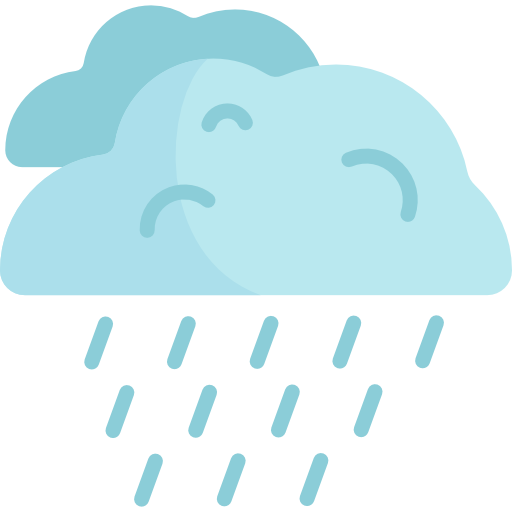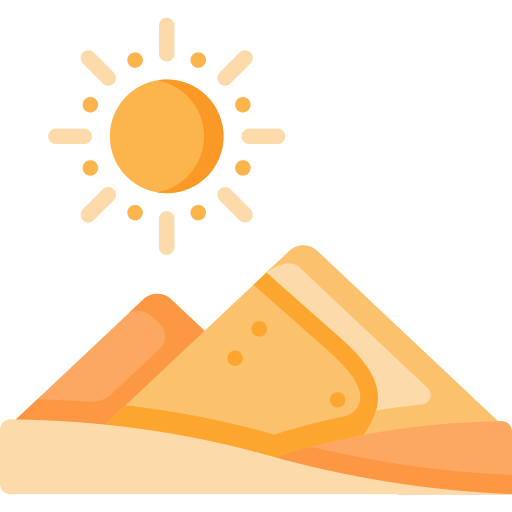MUMBAI
Welcome to the city that never sleeps, Mumbai! If you're a fan of crowded streets, honking cars, and bustling markets, then this is the place for you. But don't let the chaos scare you away – Mumbai has a charm that's hard to resist.
From the iconic Gateway of India to the famous Marine Drive, there's no shortage of things to do in this vibrant city. Take a stroll through the quaint lanes of Colaba or indulge in some street food at Juhu Beach – there's something for everyone.
The locals here are known for their warm hospitality and quick wit. You'll never be bored with their hilarious one-liners and unique phrases like "timepass" and "chalta hai". You might even pick up a few words of Hindi or Marathi along the way!
But Mumbai isn't just about fun and games – it's also home to some of India's biggest industries, including Bollywood and finance. So whether you're here for work or play, there's always something exciting happening in this city.
So grab your chai and vada pav (or coffee and croissant, if that's more your thing) and get ready to experience Mumbai like never before!
Table of Contents
- Introduction
- History and Culture of Mumbai
- How to Reach and getting around Mumbai
- Weather of Mumbai
- Places to Visit in Mumbai
- Food Options and Local Cuisine of Mumbai
- Best areas for Accommodation in Mumbai
- Shopping in Mumbai
- Nightlife in Mumbai
- Festivals and Events in Mumbai
- Tips for Travelers travelling to Mumbai
- FAQs
History and Culture of Mumbai
Mumbai, formerly known as Bombay, is a city that never sleeps. It is the financial capital of India and is famous for its vibrant culture, delicious food, and bustling streets. Mumbai has a rich history that dates back to the 2nd century BC when it was a group of seven islands inhabited by fishing communities.
- Mumbai has come a long way since then and has transformed into a cosmopolitan city that blends modernity with tradition. The city's architecture reflects its colonial past and boasts of beautiful Gothic-style buildings such as the Gateway of India and the Victoria Terminus.
- One of Mumbai's biggest cultural exports is Bollywood, which produces more films than any other film industry in the world. The city's love for cinema can be seen in its numerous theaters and movie halls that are always packed with enthusiasts.
- Mumbai is also famous for its lip-smacking street food, which includes vada pav, pav bhaji, and bhel puri. The city's food scene is a melting pot of various cuisines from all over India.
- Another interesting aspect of Mumbai's culture is its local trains. These trains are the lifeline of the city and are always packed with commuters who travel to their workplaces every day. The train ride can be chaotic but it gives you an authentic experience of the city.
- In conclusion, Mumbai is a city that embraces diversity and celebrates life in all its forms. From its rich history to its vibrant culture, there's never a dull moment in this lively metropolis.
How to Reach and getting around Mumbai
There are multiple ways to reach Mumbai, the financial capital of India. The city is well-connected to major cities both within and outside India.
One of the easiest and most popular ways to reach Mumbai is by air. The city has one of the busiest airports in India, the Chhatrapati Shivaji International Airport, which receives flights from major domestic and international destinations. It is just 30 minutes away from the central business district.
If you prefer to travel by train, Mumbai has a vast network of railways connecting it to different parts of India. The city has two major railway stations - Mumbai Central and Chhatrapati Shivaji Terminus (CST). These stations have trains running frequently from different parts of the country.
Another way to reach Mumbai is by road. If you are travelling from nearby cities like Pune or Nashik, you can choose either a bus or car. Mumbai has several highways such as NH3, NH4, NH8 that connect it with other cities.
For those who love sea travel, there are several cruise ships that run between Goa and Mumbai. This option provides a unique experience and a chance to explore both destinations.
Lastly, if you want to experience luxury travel, you can opt for private chartered flights that land at Juhu airport or Mahalaxmi Helipad in Mumbai.
In conclusion, reaching Mumbai is not a difficult task as it has excellent connectivity options including airways, railways, roadways, sea transport and even chartered flights. So pack your bags and choose your preferred mode of transportation for an exciting trip to this vibrant city!
Weather of Mumbai












 Extreme Winters
Extreme Winters Mild Winters
Mild Winters Hot + Dry
Hot + Dry Hot + Humid
Hot + Humid Rainy
Rainy Cool and Pleasant
Cool and PleasantMumbai, also known as the city of dreams, experiences a tropical climate throughout the year. It has three main seasons: summer, monsoon and winter. During summers, the temperature can range from 30°C to 40°C, with high humidity levels making it uncomfortable for tourists. The monsoon season starts from June and lasts till September when Mumbai receives heavy rainfall. The weather during this time can be unpredictable with frequent showers and occasional flooding.
The best time to visit Mumbai is from October to February, during the winter months when the temperature ranges between 10°C to 30°C, making it pleasant for sightseeing and outdoor activities. This is also the festive season in Mumbai with popular events like Diwali, Christmas and New Year's Eve celebrations taking place.
Apart from these months, Mumbai experiences a hot and humid climate throughout the year which may not be suitable for some travelers. However, if you wish to experience the city during its liveliest time then visit during Ganesh Chaturthi which is celebrated in August or September every year.
Overall, October to February is the ideal time to plan your trip to Mumbai as it offers comfortable weather conditions and a chance to experience the vibrant culture of this bustling city without any discomfort or inconvenience caused by extreme weather conditions.
Places to Visit in Mumbai
1. Gateway of India: A famous landmark and historical monument, the Gateway of India was built in 1924 to commemorate the visit of King George V and Queen Mary to Mumbai. It is located at the Apollo Bunder waterfront in South Mumbai and offers a stunning view of the Arabian Sea.
2. Elephanta Caves: The Elephanta Caves are a UNESCO World Heritage site located on Elephanta Island, a short ferry ride away from Mumbai. These ancient rock-cut caves date back to the 5th century and contain intricate sculptures and carvings of Hindu deities.
3. Chhatrapati Shivaji Terminus: Formerly known as Victoria Terminus, Chhatrapati Shivaji Terminus is a historic railway station that was built in 1887. It is a UNESCO World Heritage site and an architectural marvel with its Gothic Revival style.
4. Marine Drive: Marine Drive is a popular promenade that stretches along the coast of South Mumbai. It is also known as the Queen's Necklace because of its sparkling lights at night resembling a necklace. The view from here at sunset or sunrise is breathtaking.
5. Haji Ali Dargah: Situated on an islet off the coast of Worli, Haji Ali Dargah is a famous mosque and pilgrimage site for Muslims in Mumbai. The mosque's white marble structure with golden domes appears to be floating on water during high tides.
6. Crawford Market: Crawford Market, also known as Mahatma Jyotiba Phule Mandai, is one of Mumbai's oldest markets located in South Mumbai. Here you can find everything from fresh produce, spices, and flowers to pets, clothes, and electronics at reasonable prices.
7. Bandra-Worli Sea Link: The Bandra-Worli Sea Link is an engineering marvel that connects Bandra to Worli over the Arabian Sea. It has become an iconic symbol of modern Mumbai with its sleek design and stunning views.
8. Sanjay Gandhi National Park: Sanjay Gandhi National Park, located in North Mumbai, is one of India's largest national parks spread over 104 square kilometers with diverse flora and fauna including tigers, leopards, deer species among others.
9. Colaba Causeway: Colaba Causeway market situated near Gateway of India offers everything from street food stalls to antique shops selling handicrafts and unique souvenirs for travelers visiting Mumbai.
10. Juhu Beach: Juhu Beach situated in Western suburbs attracts Mumbaikars due to its lively atmosphere along with street food vendors selling local delicacies while enjoying a scenic view sunset at beachside restaurants.
Note:
Markdown format used for bold letters, italic letters, code snippet.
Adventures Activities
Heritage Places
Beaches
Nearby Forests
Food Options and Local Cuisine of Mumbai
Best areas for accommodation in Mumbai
Mumbai, the city of dreams, is a bustling metropolis that attracts millions of visitors every year. From its iconic landmarks to its vibrant culture, Mumbai is a city that has something for everyone. When it comes to finding accommodation in Mumbai, there are several areas that are popular with tourists and locals alike.
South Mumbai (Colaba, Marine Drive) - This area is known for its stunning views of the Arabian Sea and iconic landmarks like the Gateway of India. It's also home to some of Mumbai's best restaurants and nightlife spots.
Juhu Beach - Located in the western suburbs, Juhu Beach is a popular destination for tourists and locals alike. It offers stunning views of the Arabian Sea and is home to several luxury hotels.
Bandra West - Known as one of Mumbai's hippest neighborhoods, Bandra West is packed with trendy restaurants, cafes, and bars. It's also a popular shopping destination.
Here are three properties for accommodation in Mumbai:
The Taj Mahal Palace - This historic luxury hotel is located in South Mumbai and offers stunning views of the Arabian Sea. It features 560 rooms and suites, several restaurants and bars, a spa, and a pool.
Zostel Mumbai - Located in the trendy neighborhood of Bandra West, Zostel Mumbai is a budget-friendly hostel that offers dormitory-style accommodation. It features a rooftop cafe, communal kitchen, and free Wi-Fi.
The Backpacker Panda Colaba - This hostel is located in South Mumbai close to several attractions like the Gateway of India and Colaba Causeway. It offers dormitory-style accommodation as well as private rooms. The hostel features free Wi-Fi, a rooftop terrace, and an on-site restaurant.
Overall, whether you're looking for luxury or budget-friendly options, there are plenty of great areas for accommodation in Mumbai.
Shopping in Mumbai
Mumbai, a bustling city of India, is a shopper's paradise. From street markets to high-end malls, Mumbai offers a diverse range of shopping experiences. Here are some things to buy, markets to visit and things to avoid while shopping in Mumbai.
Things to buy:
- Chappals (slippers): Mumbai is famous for its leather chappals that are comfortable and affordable.
- Bollywood merchandise: Shop for posters, t-shirts, and other Bollywood memorabilia at Colaba Causeway market.
- Junk jewelry: Head to Linking Road in Bandra for trendy and affordable junk jewelry.
- Spices: Crawford Market is the place to buy aromatic spices like cardamom, saffron, and cinnamon.
Markets to visit:
- Chor Bazaar: This market is known for its antiques and vintage items like gramophones, typewriters, and old coins.
- Fashion Street: Located near MG Road, this market offers trendy clothes and accessories at bargain prices.
- Crawford Market: This market is known for its fresh produce, spices, and pet store.
What to avoid:
- Fake products: Avoid buying fake branded products sold on the street as they are illegal and of poor quality.
- Overpriced items: Bargain hard with the vendors as they tend to quote higher prices for tourists.
- Pickpockets: Be cautious of pickpockets in crowded markets like Colaba Causeway and Crawford Market.
- Crowded places during rush hours: Avoid visiting popular markets during peak hours as they can get extremely crowded.
Nightlife in Mumbai
Mumbai, the city that never sleeps, is known for its vibrant nightlife. From swanky lounges to lively pubs and nightclubs, the city has a lot to offer for partygoers. The nightlife scene in Mumbai is diverse and caters to all tastes and budgets. The city comes alive at night with its neon lights, music, and energetic vibe.
If you're looking for exciting things to do in Mumbai after dark, there are plenty of options available. Here are three places with activities for spending the night:
Blue Frog: A popular live music venue in Lower Parel, Blue Frog hosts some of the best local and international artists. It's a great place to enjoy live music while sipping on your favorite cocktail.
Leopard Valley: Located on the outskirts of Mumbai in Palghar, Leopard Valley is a camping site that offers adventurous activities like trekking, bonfire, and stargazing. It's an ideal place for nature lovers who want to escape the hustle-bustle of the city.
Marine Drive: A long stretch of promenade overlooking the Arabian Sea, Marine Drive is one of Mumbai's iconic landmarks. It's a great place to take a leisurely walk or sit by the sea and watch the waves while enjoying street food.
Apart from these places mentioned above, there are several other options available for nightlife in Mumbai such as clubs like Trilogy and Hype, bars like Toto's Garage and Bombay Bronx. The city has something for everyone when it comes to nightlife.
In conclusion, Mumbai's nightlife scene is dynamic and exciting with endless possibilities. Whether you're looking for live music venues or outdoor activities or just want to soak in the vibe by taking a stroll on Marine Drive- Mumbai has got you covered!
Outdoor Activities in Mumbai
Apart from the vibrant nightlife scene, Mumbai also offers a plethora of outdoor activities for adventure enthusiasts. From exploring the city's rich heritage to indulging in thrilling water sports, there is something for everyone. One can start by taking a leisurely stroll along the iconic Marine Drive or visit the famous Gateway of India. For those seeking an adrenaline rush, there are several options such as paragliding, jet skiing, and scuba diving. These activities are not only fun but also offer a unique perspective of the city's skyline and coastline.
One popular activity is paragliding, which allows you to soar above Mumbai and take in panoramic views of the city's landmarks. Another exciting option is jet skiing, which lets you zoom across the Arabian Sea and feel the wind in your hair as you navigate through waves. If you're looking to explore underwater marvels, then scuba diving is a must-try activity that will take you on a fascinating journey amidst colorful marine life.
Other outdoor activities include visiting Elephanta Caves - a UNESCO World Heritage site that boasts ancient rock-cut temples and sculptures, hiking up to Kanheri Caves - a network of Buddhist rock-cut monuments nestled amidst lush greenery, and taking a cycling tour around South Mumbai's colonial architecture - an experience that combines history with fitness.
Overall, Mumbai's outdoor activities offer an exciting way to experience the city's diverse offerings while also providing an escape from its chaotic urban life.
Festivals and Events in Mumbai
Festivals and events are an integral part of Mumbai's culture and add to the city's vibrancy. The city is known for its diverse population, and as a result, there are numerous festivals celebrated throughout the year. These festivals bring people together and offer a glimpse into the rich cultural heritage of Mumbai. Here are some of the popular festivals and events celebrated in Mumbai:
Ganesh Chaturthi (August/September): This ten-day festival celebrates Lord Ganesha's birth, and it is one of the most important festivals in Mumbai. The city comes alive with vibrant decorations, processions, and music.
Diwali (October/November): This festival of lights is celebrated with great enthusiasm in Mumbai. People light diyas, decorate their houses with lights, and indulge in delicious food.
Holi (March): Holi is a festival of colors that marks the arrival of spring. People throw colored powder on each other and celebrate this joyful occasion.
Kala Ghoda Arts Festival (February): This week-long festival celebrates art, music, dance, theater, literature, and food. It takes place in the Kala Ghoda neighborhood in South Mumbai.
Mumbai International Film Festival (January/February): This biennial film festival showcases international cinema from around the world.
Elephanta Festival (February/March): This two-day festival takes place on Elephanta Island near Mumbai. It features classical music performances against the backdrop of ancient caves.
These are just a few examples of the many festivals and events that take place in Mumbai throughout the year. Each festival has its unique significance in celebrating culture and bringing people together. Visitors to Mumbai can experience these events firsthand and immerse themselves in the city's vibrant culture.
Tips for Travelers while travelling to Mumbai
- Plan your trip around festivals and events: Mumbai is known for its vibrant and diverse culture, and there are numerous festivals and events that take place throughout the year. From the colorful Ganesh Chaturthi to the electrifying Kala Ghoda Arts Festival, make sure to plan your trip around these events to experience the city's rich cultural heritage.
- Pack light and comfortable clothing: Mumbai is known for its hot and humid weather, especially during summers. Make sure to pack light and comfortable clothing made of breathable fabrics. It's also a good idea to carry a pair of comfortable shoes as you may need to walk a lot while exploring the city.
- Use public transport: Mumbai has an extensive network of public transport, including local trains, buses, taxis, and auto-rickshaws. Using public transport not only saves money but also gives you an opportunity to experience the local way of life. However, do keep in mind that rush hour can be chaotic and crowded.
- Be cautious with street food: Mumbai is famous for its street food, but it's essential to be cautious while trying out new dishes. Stick to popular food stalls with high turnover rates and avoid eating anything raw or uncooked. It's also advisable to carry bottled water with you at all times.
- Explore beyond the tourist spots: While Mumbai has several famous landmarks like Gateway of India or Marine Drive, there's more than meets the eye in this city. Take a walk through bustling bazaars like Crawford Market or explore lesser-known areas like Pali Hill in Bandra for a glimpse into the local way of life.
In conclusion, Mumbai is a city that never sleeps! With its vibrant culture, delicious food, bustling streets, and warm people - visiting this beautiful city will undoubtedly be an unforgettable experience. Follow these tips mentioned above while traveling here so that you can make the most out of your journey!
FAQs
What is Mumbai?
Mumbai, also known as Bombay, is the capital city of the Indian state of Maharashtra. It is the most populous city in India and the ninth most populous agglomeration in the world. Mumbai is a cosmopolitan city that has a diverse culture and rich history. It is also known as the financial capital of India.
What are some popular tourist attractions in Mumbai?
Mumbai has a lot to offer to tourists. Some popular tourist attractions include the Gateway of India, Marine Drive, Elephanta Caves, Chhatrapati Shivaji Terminus (CST), Haji Ali Dargah, and Siddhivinayak Temple. Other places worth visiting are Juhu Beach, Colaba Causeway, Bandra-Worli Sea Link, and Sanjay Gandhi National Park.
What is the best time to visit Mumbai?
The best time to visit Mumbai is between November and February when the weather is mild and pleasant. The monsoon season starts in June and lasts till September. During this time, it can get very humid and rainy. However, if you want to experience Mumbai's vibrant nightlife and festivals like Ganesh Chaturthi, then visit between August and October.
How do I get around in Mumbai?
Mumbai has a well-connected public transport system that includes buses, trains, taxis, auto-rickshaws, and private cabs like Uber and Ola. The local trains are an efficient way to travel within the city as they cover a large network of routes. Auto-rickshaws are also convenient for short distances but make sure to agree on a fare beforehand.
What is the local cuisine of Mumbai?
Mumbai offers a wide variety of cuisines ranging from street food to fine dining restaurants. Some popular local dishes include vada pav (a spicy potato fritter sandwich), pav bhaji (a vegetable curry served with bread), bhel puri (a savory snack made with puffed rice), and sev puri (a crispy snack topped with chutney). Do try out some seafood delicacies like pomfret fry or prawn curry while you're here!
Is it safe for solo travelers to visit Mumbai?
Mumbai is generally safe for solo travelers but like any big city; one should take necessary precautions while traveling alone at night or in secluded areas. Avoid carrying too much cash or valuables while traveling around the city. Always book taxis from reputable companies or use ride-hailing apps like Uber or Ola.
What souvenirs can I buy from Mumbai?
Some unique souvenirs that you can buy from Mumbai include handicrafts made by local artisans such as Warli paintings or Kalamkari fabrics; Bollywood memorabilia like DVDs of classic movies or posters; spices and tea blends; leather goods like bags or shoes; and jewelry made with precious stones or pearls.




